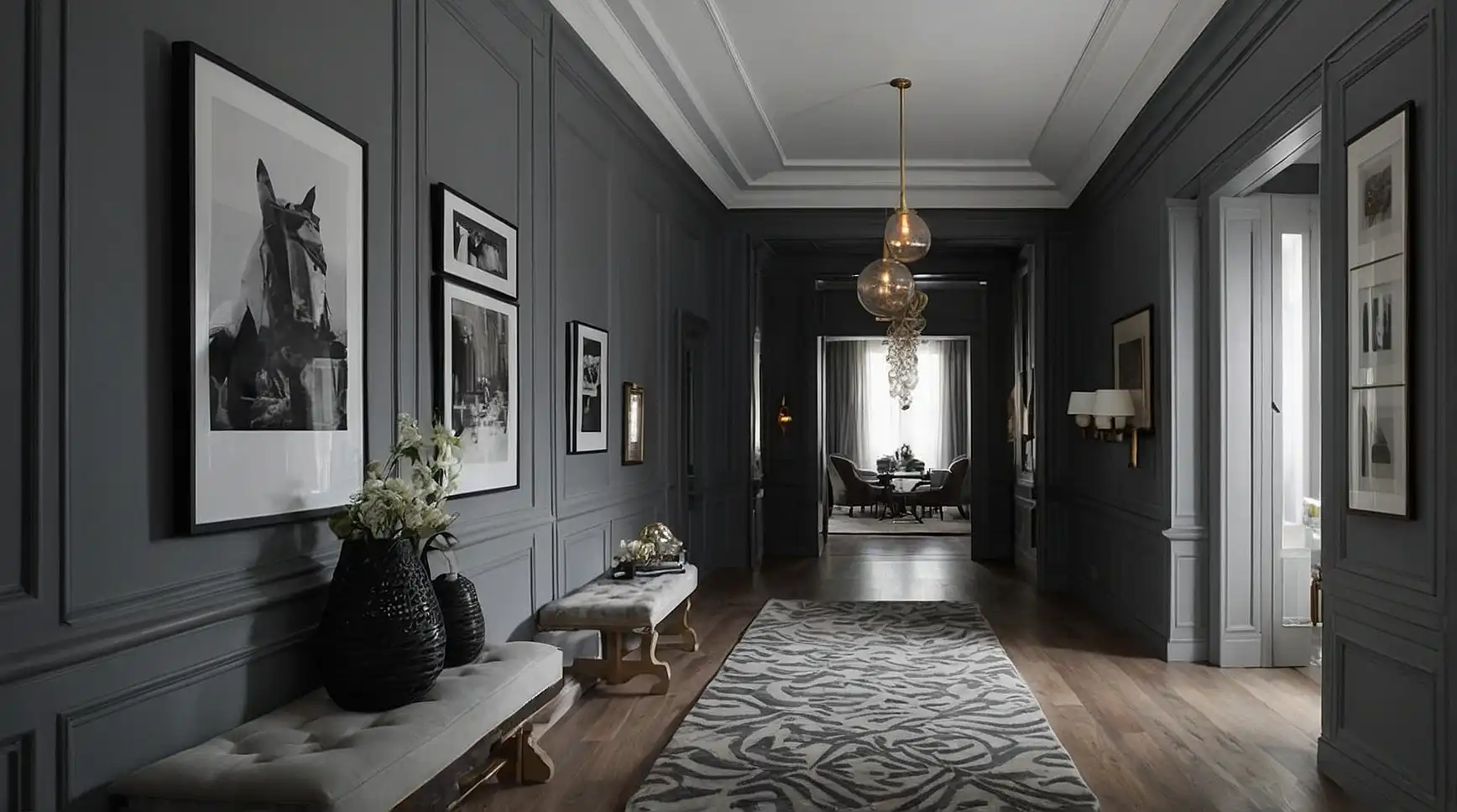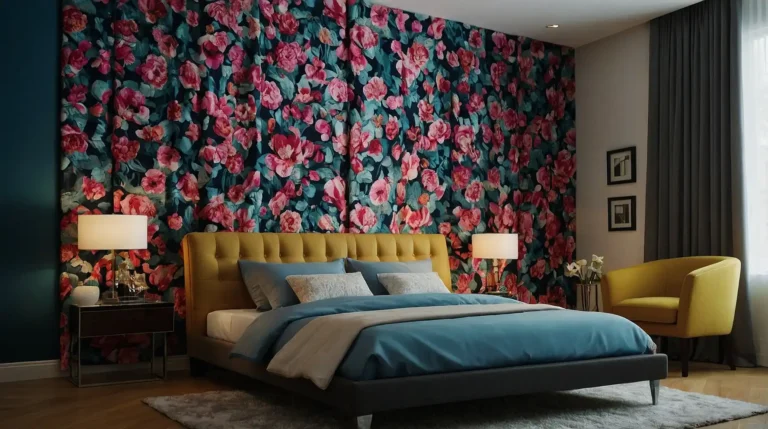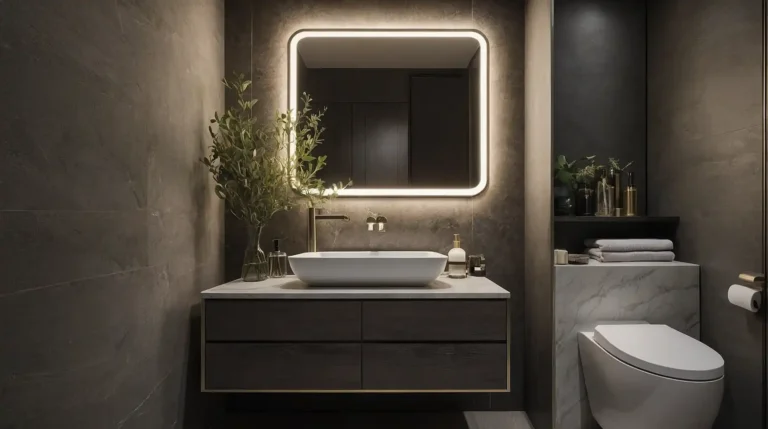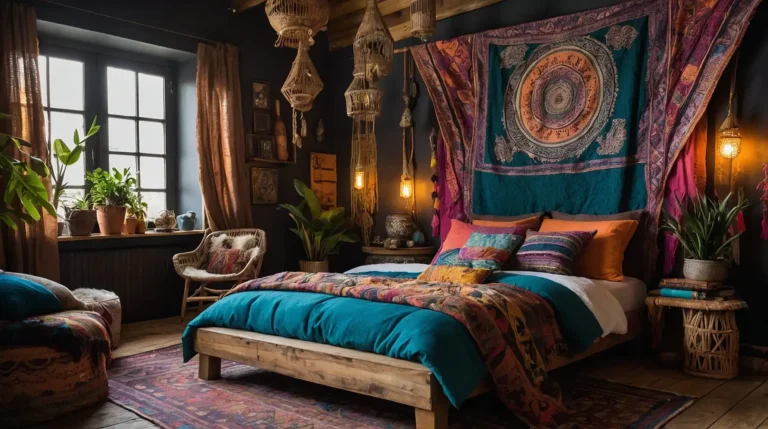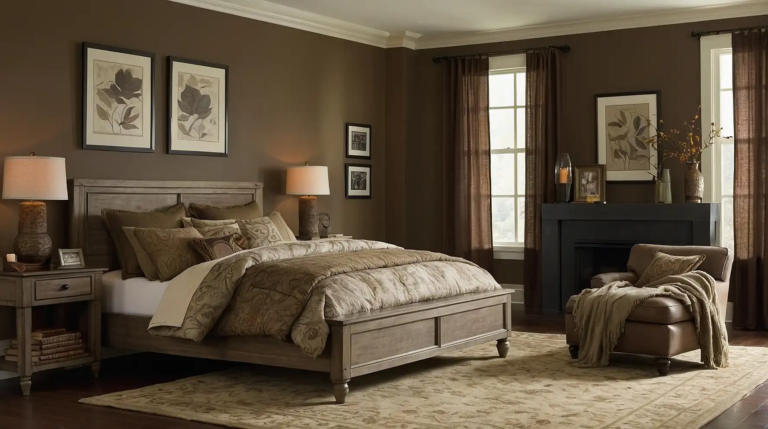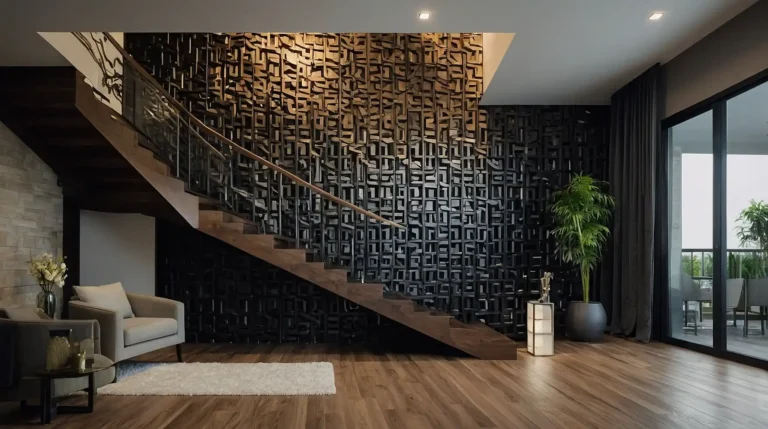21 Stunning Gray Hallway Ideas That Transform Forgotten Spaces Into Design Statements
Gray has emerged as the perfect neutral for hallways—sophisticated enough to make a statement while versatile enough to complement any adjoining rooms.
This chameleon-like color creates the ideal backdrop for your home’s transitional spaces.
With the right shade of gray, you can make narrow hallways appear wider, low ceilings feel higher, and dark passages brighter.
The key lies in understanding how to pair this versatile hue with complementary elements.
Ready to transform your corridor from a mere passageway into a design feature?
These 21 gray hallway ideas will inspire you to rethink this often-overlooked space and turn it into one of your home’s most stylish areas.
1: Two-Tone Gray Walls

Create visual interest by painting your hallway walls in two different gray tones, with the darker shade on the bottom half.
This classic approach adds architectural detail even in plain spaces.
Use a chair rail or simple molding to create a clean division between the two colors.
The darker bottom half hides scuff marks from daily traffic, while the lighter top brightens the space and makes ceilings appear higher.
2: Gray Paneled Walls

Install vertical wood paneling painted in a soft gray for instant texture and character.
This treatment adds dimension that flat painted walls simply can’t achieve.
Choose between traditional tongue-and-groove, modern slatted designs, or classic board and batten.
The subtle texture catches light and shadow throughout the day, creating visual interest in a space that might otherwise feel flat.
3: Gray Gallery Wall
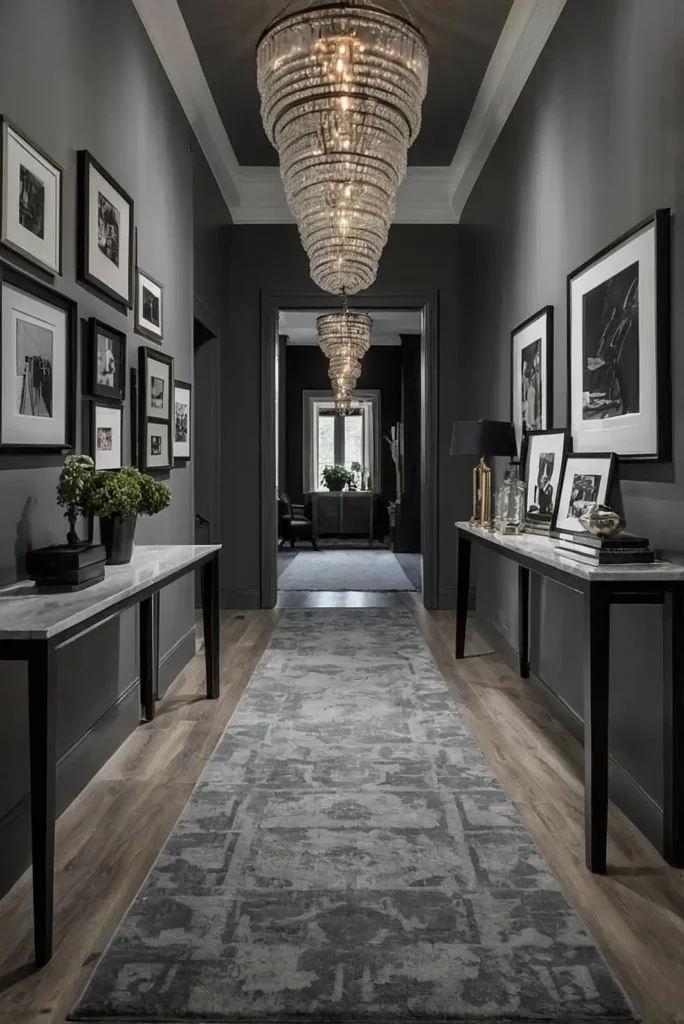
Transform your hallway into an art gallery using a medium gray background that makes artwork pop without competing for attention.
This neutral backdrop serves as the perfect canvas for displaying your collection.
Install picture lighting above special pieces for a museum-quality effect.
The gray walls recede, allowing your art to become the star while still providing more warmth and interest than stark white.
4: Patterned Gray Wallpaper
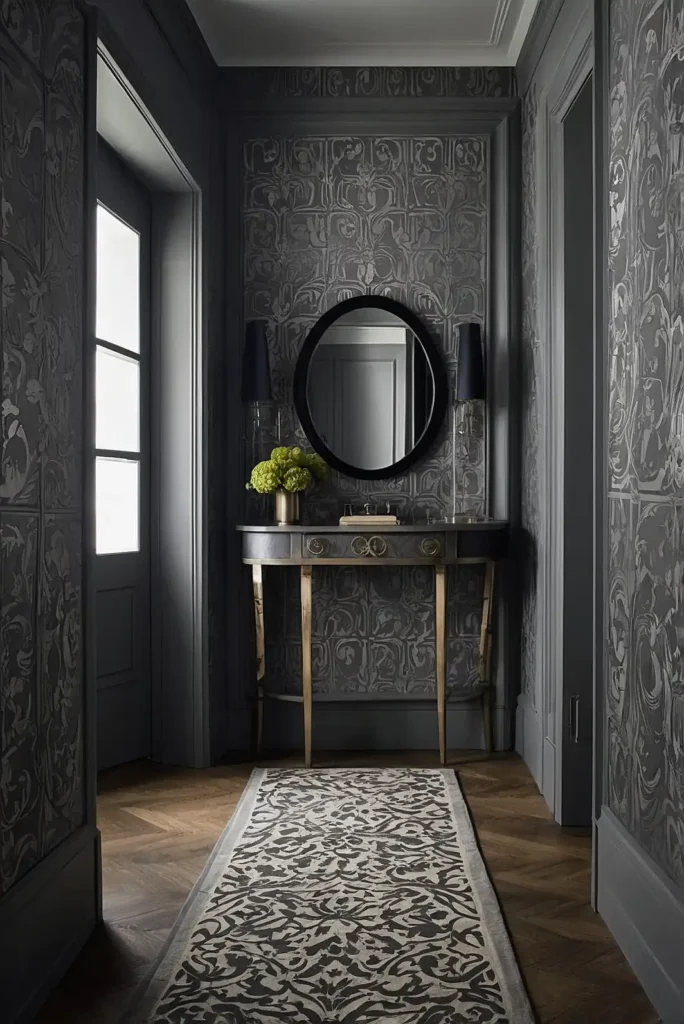
Install subtly patterned gray wallpaper to add dimension without overwhelming the narrow space.
Patterns can visually expand your hallway while adding a designer touch.
Look for small-scale geometric designs, subtle textures, or tone-on-tone patterns.
The visual texture creates interest while maintaining the sophisticated, neutral appeal that makes gray so versatile and enduring.
5: Gray Ceiling Focus
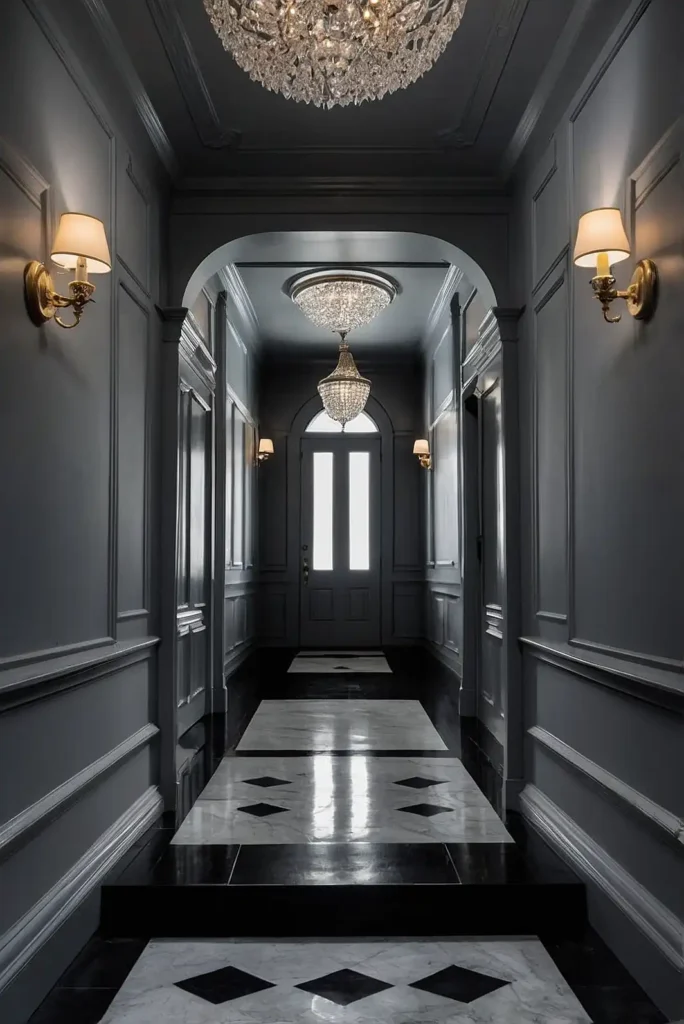
Paint your ceiling a deep charcoal gray while keeping walls lighter to create architectural drama and the illusion of height.
This unexpected approach draws the eye upward and adds dimension.
Add simple crown molding painted the same color as the ceiling for a cohesive look.
This technique works particularly well in hallways with high ceilings that can handle the visual weight of a darker overhead color.
6: Gray Carpet Runner
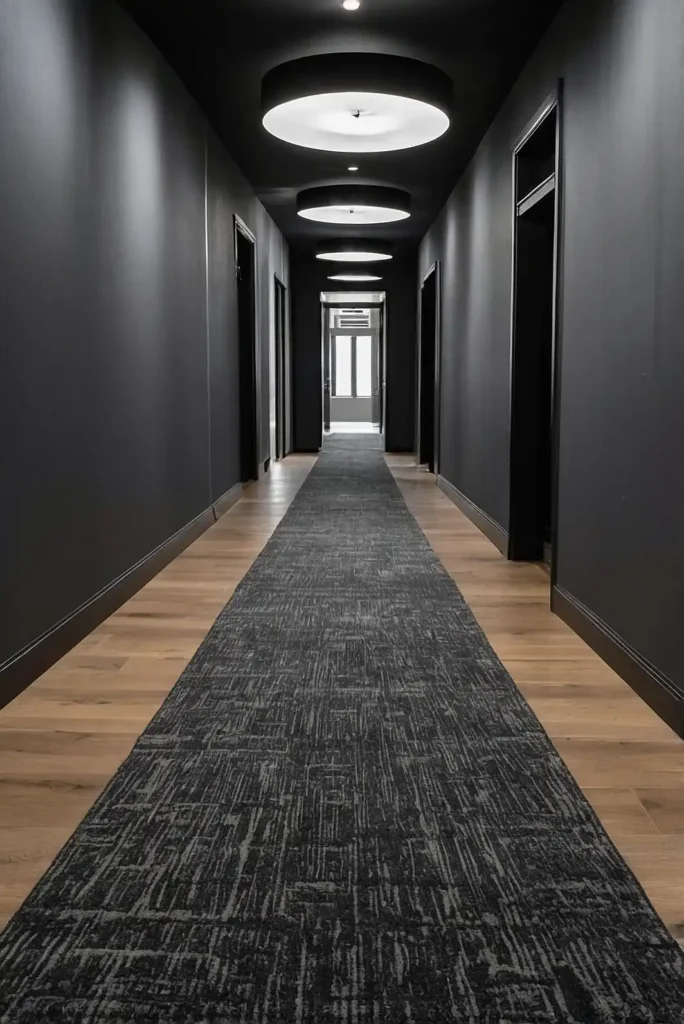
Install a textured gray carpet runner over wood or tile floors to add warmth, reduce noise, and define your hallway path.
The right runner transforms both the look and feel of your space.
Choose patterns with subtle variations of gray or interesting textures for visual interest.
This practical addition protects your floors in high-traffic areas while adding comfort underfoot during chilly months.
7: Gray and White Contrast
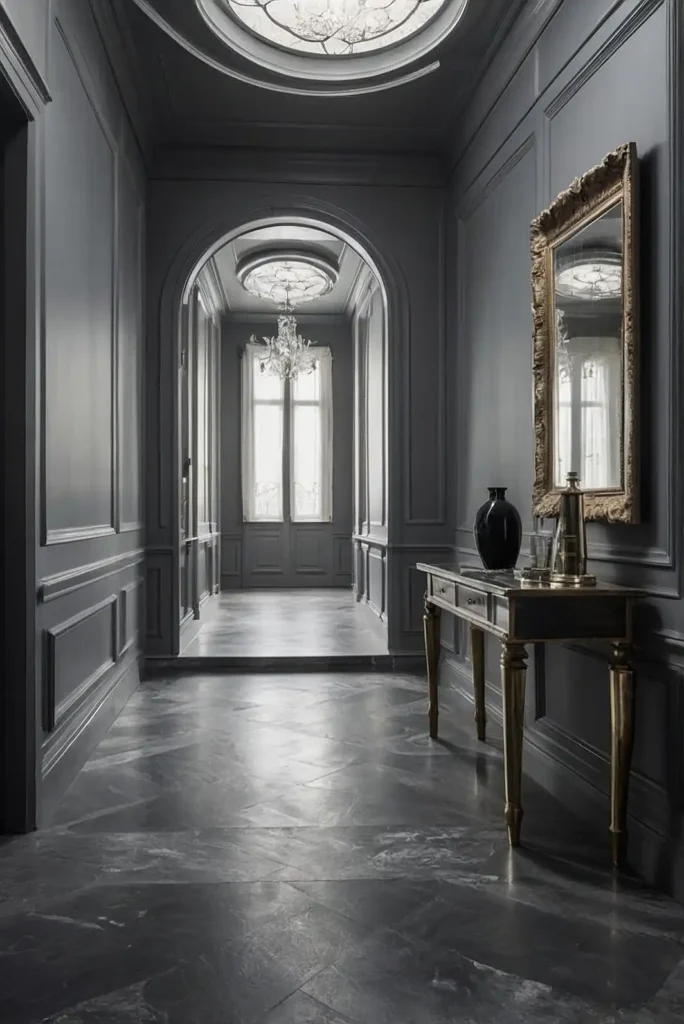
Pair light gray walls with crisp white trim and doors for a clean, architectural look that brightens even the darkest hallways.
This classic combination never goes out of style.
The contrast defines architectural features and creates visual breaks in long corridors.
This approach works equally well in modern and traditional homes, creating a timeless backdrop for changing décor styles.
8: Gray Built-In Storage
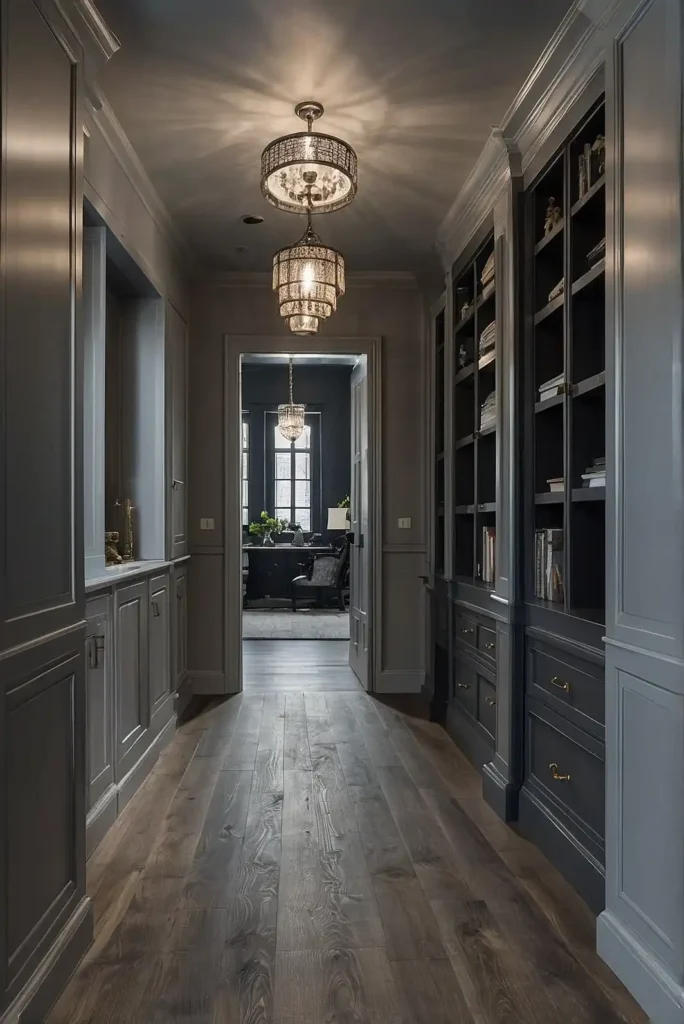
Maximize functionality by installing built-in cabinets or shelving painted in a sophisticated gray.
This practical addition eliminates clutter while adding architectural character.
Choose a gray that complements your wall color—either a perfect match for seamless integration or a slightly darker tone for subtle contrast.
Custom storage transforms your hallway from a pass-through space into a hardworking part of your home.
9: Gray Stone or Tile Flooring
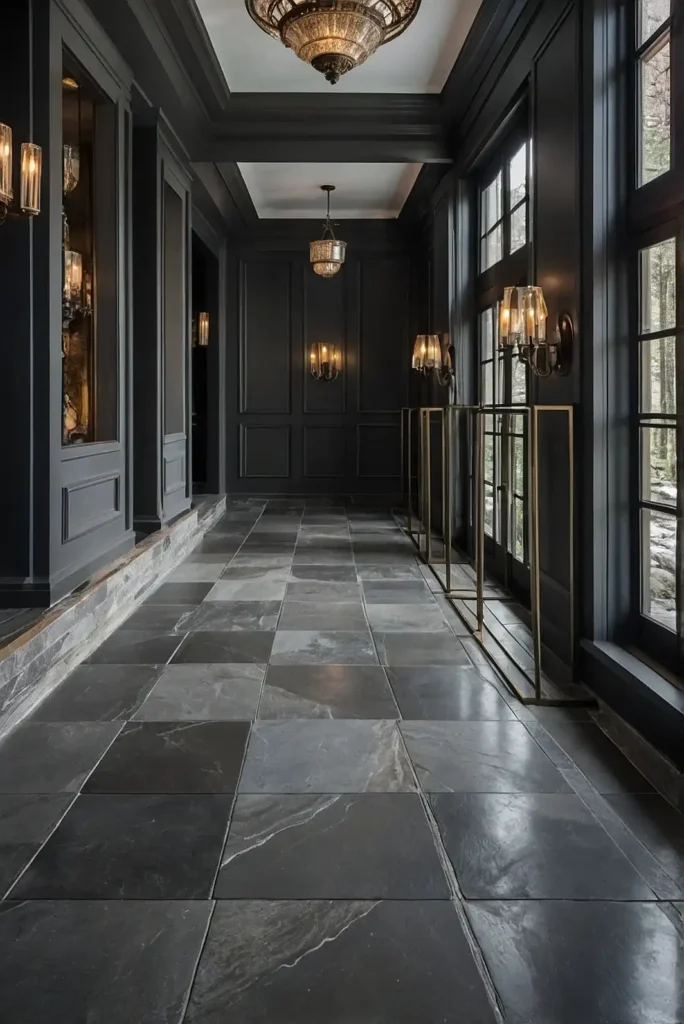
Install gray stone, porcelain, or ceramic tiles in your hallway for a durable, elegant foundation that stands up to heavy foot traffic.
The natural variations in stone add visual interest.
Choose larger format tiles to make narrow spaces appear wider.
The subtle pattern created by natural stone variations adds sophisticated texture without overwhelming the limited square footage of most hallways.
10: Gray Ombre Effect
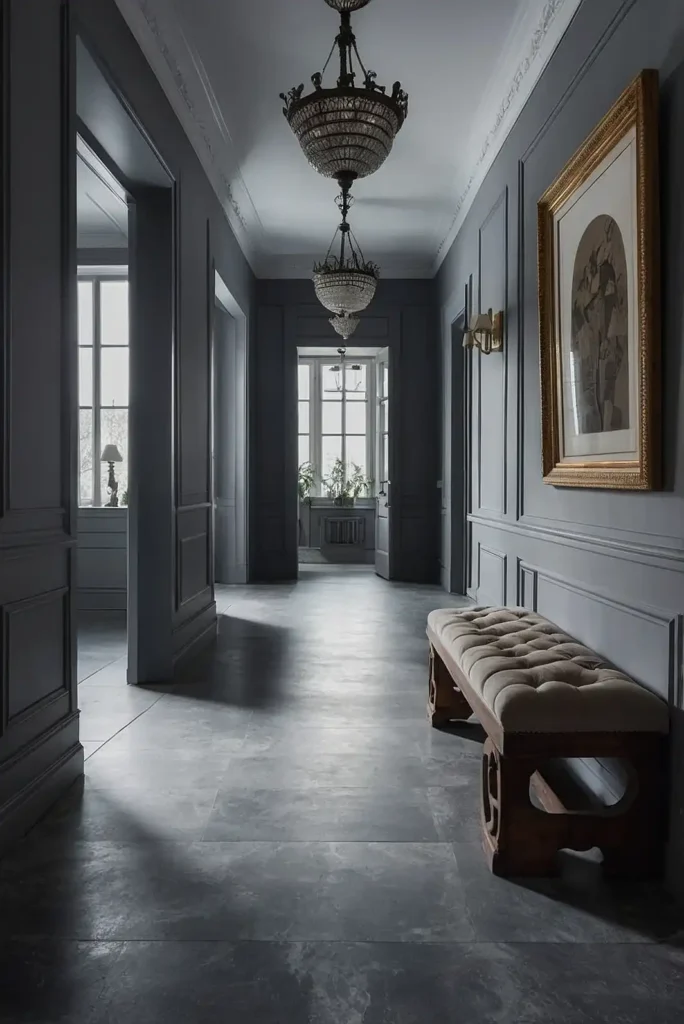
Create a stunning ombre effect by gradually transitioning from light gray at one end of your hallway to a deeper shade at the other.
This creates movement and visual interest in the space.
This technique works particularly well in longer hallways where the gradual shift becomes more apparent.
The subtle graduation adds sophistication while drawing visitors through the space naturally.
11: Gray and Wood Combination
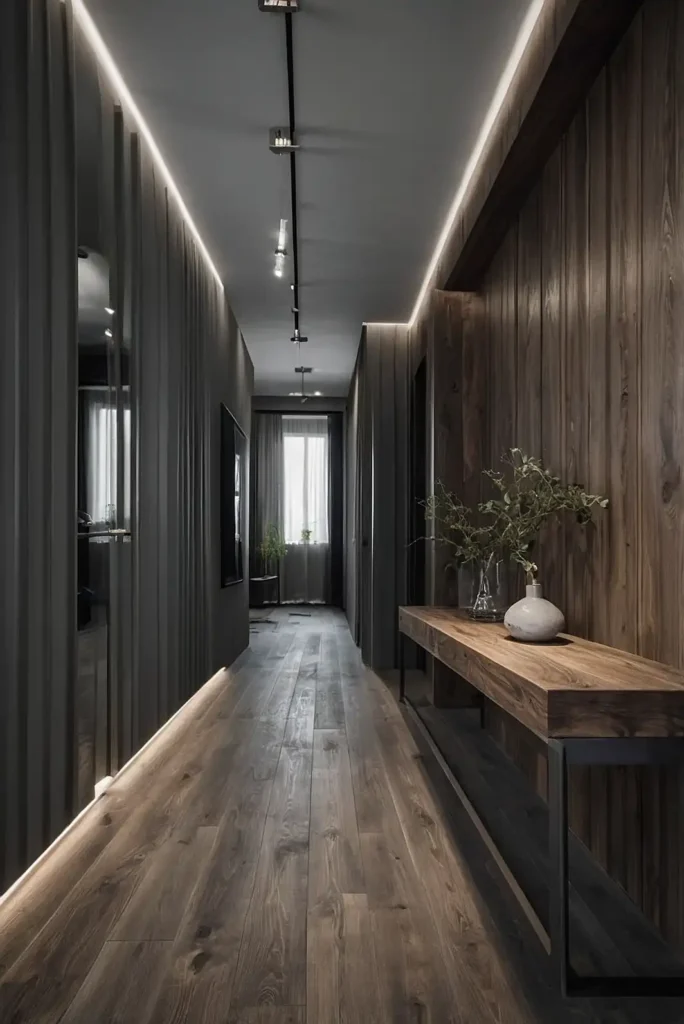
Pair gray walls with warm wood elements like flooring, doors, or beams to create balance between cool and warm tones.
This combination feels both modern and timeless.
The contrast between the neutral gray and natural wood grain adds depth and interest.
This pairing works in virtually any style home, from rustic farmhouse to sleek contemporary spaces.
12: Textured Gray Plaster
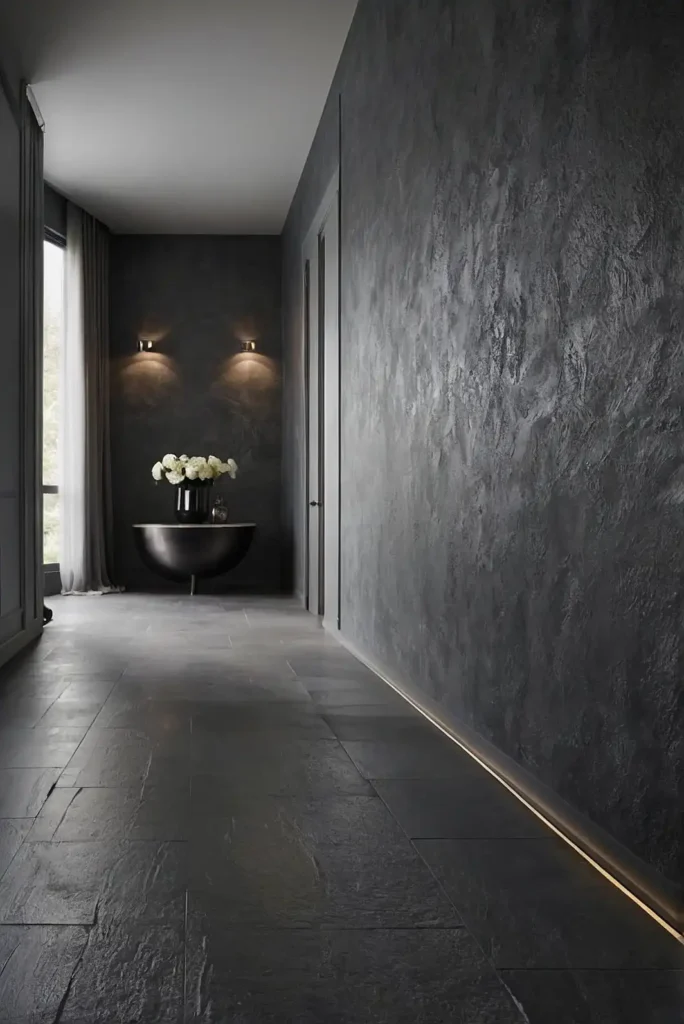
Apply textured plaster in varying shades of gray for old-world sophistication and depth that flat paint can’t achieve.
This technique adds subtle dimension to your walls.
The slight variations in color and texture create visual interest that changes throughout the day as light shifts.
This approach adds character to new construction while enhancing the authenticity of period homes.
13: Gray and Brass Accents
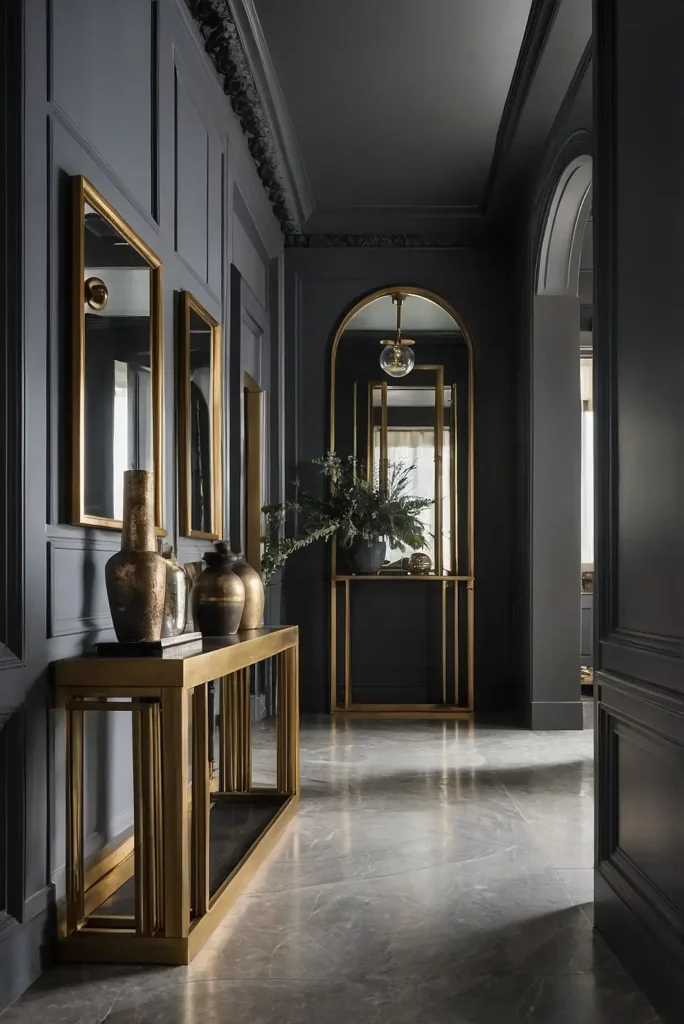
Combine cool gray walls with warm brass lighting fixtures, frames, or hardware for a sophisticated color pairing that feels both contemporary and timeless.
The metallic elements add necessary warmth.
The reflective quality of brass brings light into potentially dark hallways.
This combination works equally well in traditional settings and modern spaces, adapting to your overall design aesthetic.
14: Gray Bead board Wainscoting
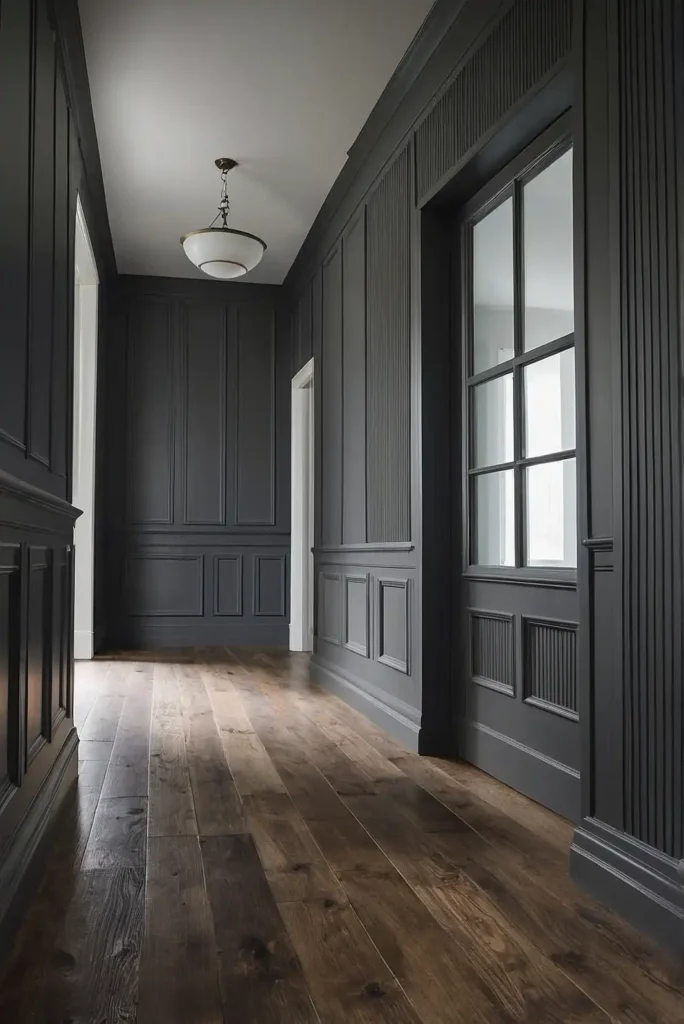
Install traditional bead board wainscoting painted in a durable satin gray for character and practicality in busy hallways.
This classic treatment protects walls from scuffs while adding architectural interest.
Paint the upper portion of your walls in a lighter shade of gray for an airier feel.
This traditional approach adds charm to new homes while honoring the character of older residences.
15: Gray Statement Door
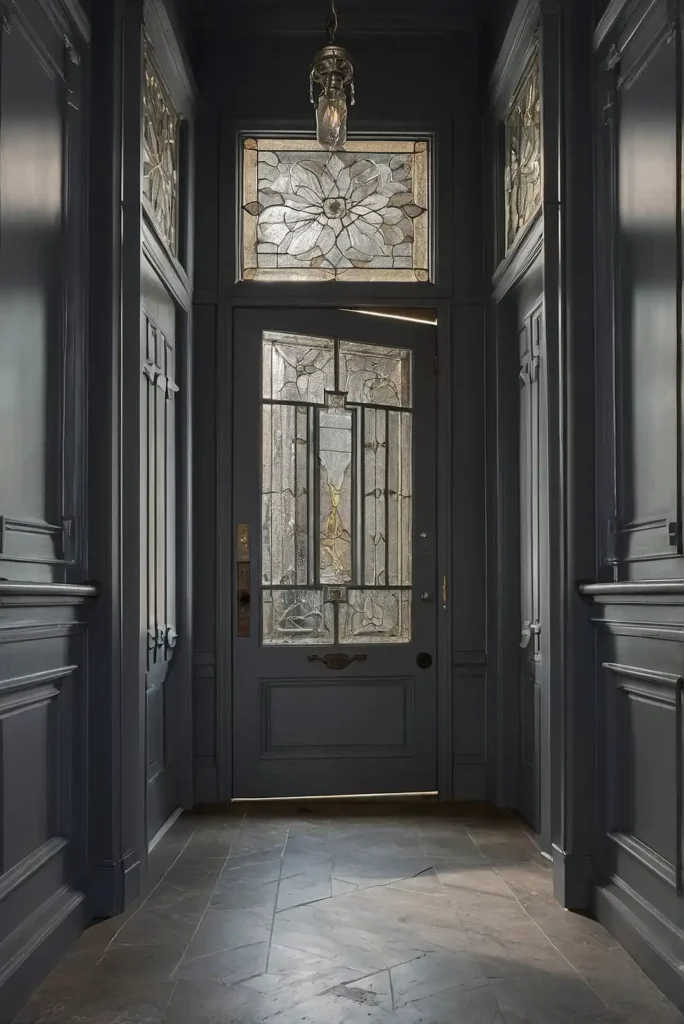
Paint interior doors along your hallway in a deep charcoal gray while keeping walls lighter for dramatic punctuation that defines the space.
This creates natural rhythm in long corridors.
Consider adding simple molding to flat doors before painting for added detail.
The contrast draws attention to the doors themselves, transforming these necessary elements into design features.
16: Gray Hallway With Plants
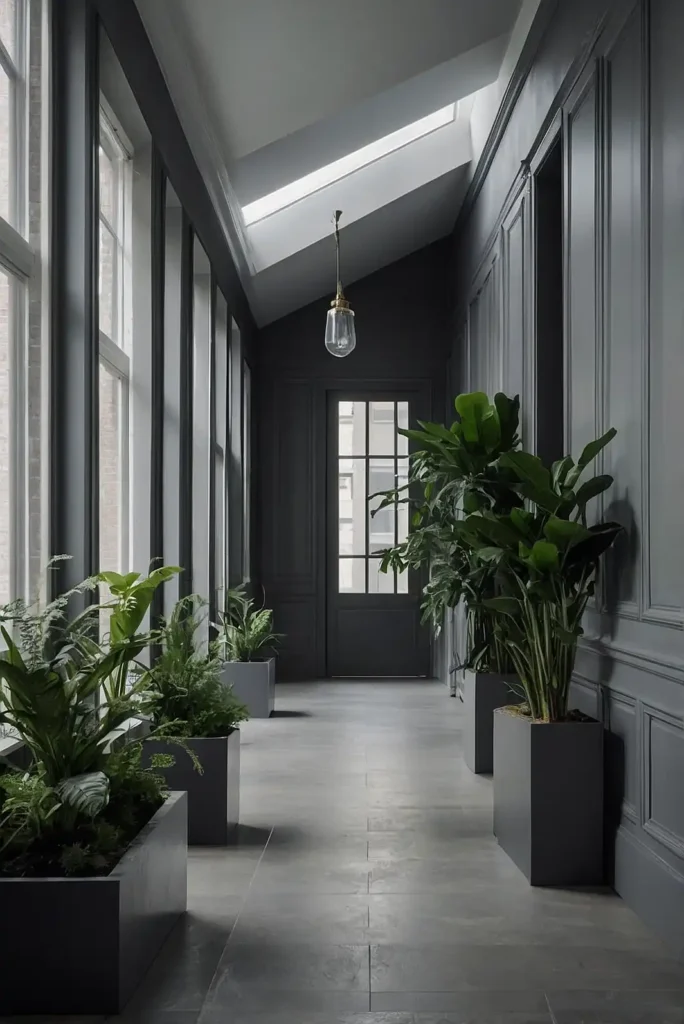
Soften gray hallways by incorporating plants that thrive in low-light conditions.
The green foliage creates beautiful contrast against cool gray backgrounds while adding life to transitional spaces.
Install wall-mounted planters or place tall plants at the ends of hallways to define the space.
The organic shapes of plants soften the linear nature of most hallways while improving air quality.
17: Gray and Yellow Accents

Energize your gray hallway with strategic pops of yellow in artwork, runner patterns, or small accessories.
This color combination feels both modern and cheerful in often-overlooked spaces.
The contrast between cool gray and warm yellow creates perfect visual balance.
Just a few yellow elements make a significant impact against a neutral gray backdrop without overwhelming the space.
18: Gray Hallway With Mirrors
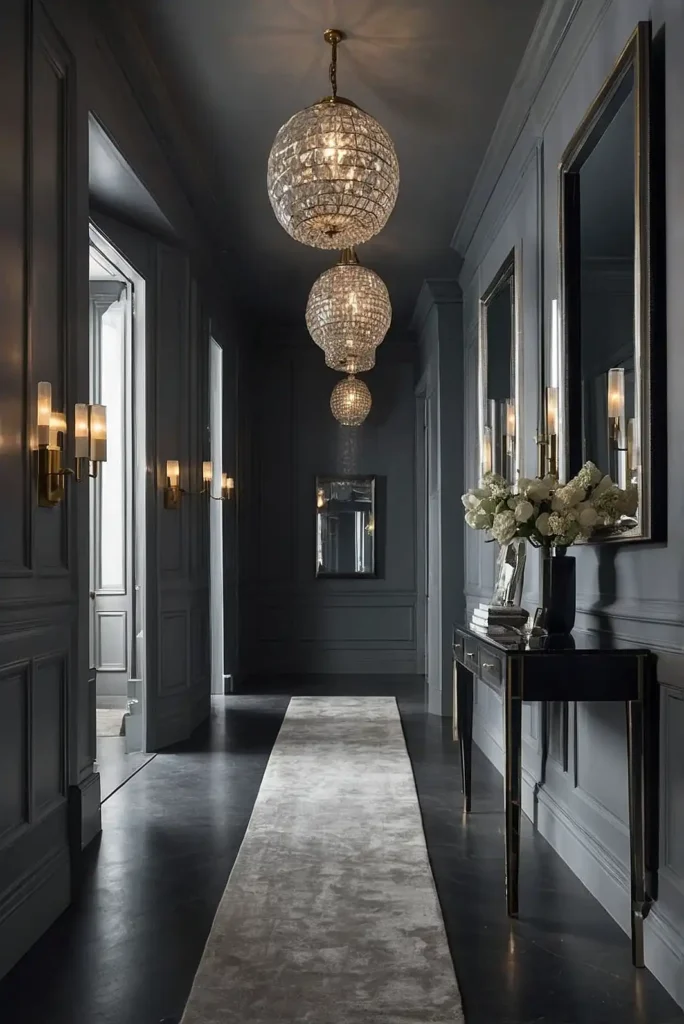
Expand your hallway visually by incorporating mirrors against gray walls.
This designer trick bounces light and creates the illusion of more space in typically narrow areas.
Choose mirrors with frames that complement your overall design scheme.
The reflective surfaces brighten dark hallways while giving you a convenient spot to check your appearance before heading out.
19: Gray Concrete Effect

Create an industrial-chic look with paint techniques or wallpaper that mimics the appearance of concrete in varying shades of gray.
This contemporary approach adds urban sophistication to your hallway.
The textural quality adds interest without requiring actual construction.
This look pairs beautifully with minimal, modern furnishings and architectural lighting for a gallery-like atmosphere.
20: Gray Hallway With Lighting Features

Install dramatic lighting fixtures against gray backgrounds to create stunning visual moments in your hallway.
Gray provides the perfect neutral backdrop for statement lighting.
Consider wall sconces, a unique pendant, or even LED strip lighting for modern impact.
The interplay between light and shadow on gray surfaces creates depth and atmosphere often missing in transitional spaces.
21: Gray Monochromatic Scheme
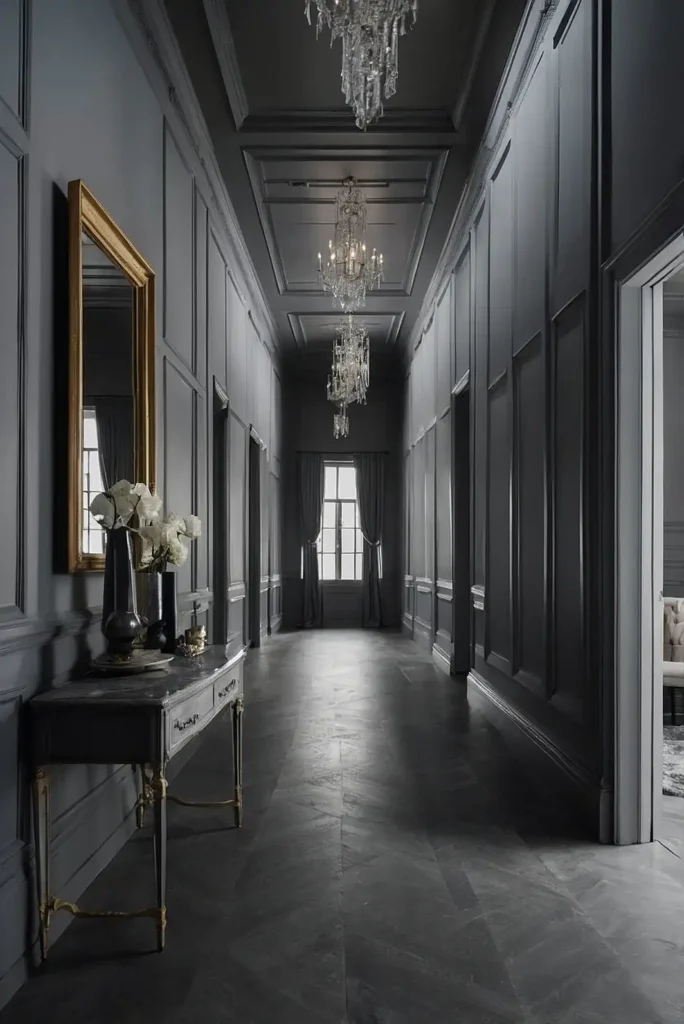
Embrace different shades and textures of gray throughout your hallway for a sophisticated monochromatic design that feels cohesive and intentional.
This approach creates subtle depth without visual clutter.
Incorporate varying textures—matte walls, glossy woodwork, nubby textiles—to add dimension.
This sophisticated approach creates a serene transition between rooms while still offering visual interest.
Conclusion
Your gray hallway can become one of your home’s most sophisticated spaces.
Start with the perfect shade of gray as your foundation, then build layers of texture, contrast, and personality to create a truly impactful corridor.

